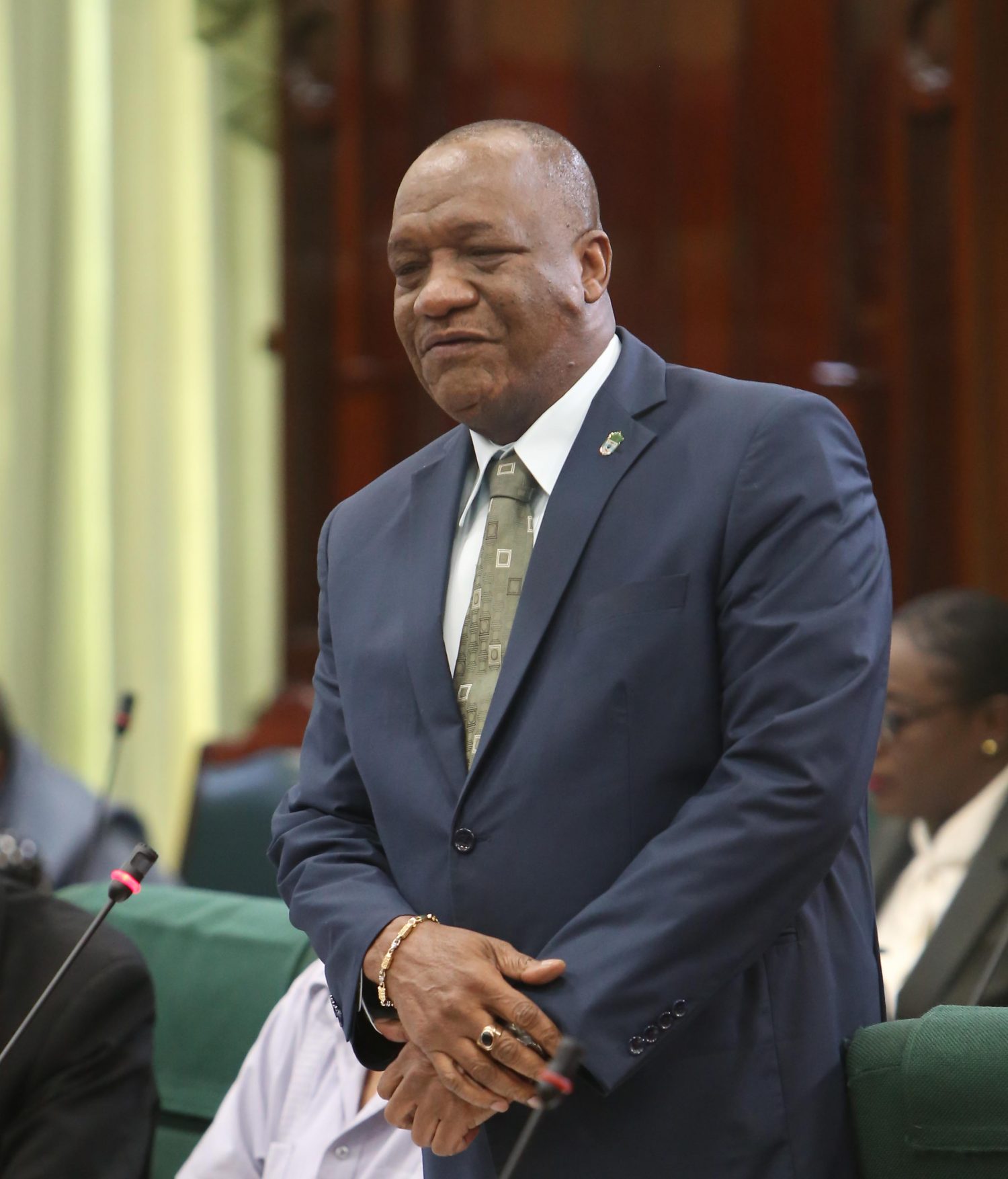Assuring that Guyana’s forest protection deal with the Kingdom of Norway is intact, Minister of State Joseph Harmon announced that government yesterday received approval for US$14,792,277 to be used for a sustainable land development and management project.
He also said that three Norway-funded Guyana REDD+ Investment Fund (GRIF) projects were approved for 2017 to the tune of US$18,530,752 and this will see seven GRIF projects in implementation and two completed, all worth a total of approximately US$67.1M.
“Mr. Speaker, the approval of three GRIF projects in a year would be the first under the framework,” Harmon told the National Assembly.
The GRIF is the financial mechanism set under the 2009 deal in which Norway agreed to pay up to US$250 million for Guyana’s performance on limiting greenhouse gas emissions from deforestation and forest degradation, and for progress made against governance-related indicators.
Harmon also said that an additional US$14 million for sustainable land development will be approved shortly under the GRIF and that the financial delivery on projects has improved to 35% halfway through the government’s first term and it is expected that it will reach more than 60% delivery by the end of 2018.
The government and Norway had been engaged in talks over US$80m from the forest protection deal that had been deposited with the Inter-American Development Bank and which was originally to be used as Guyana’s equity contribution to the Amaila Falls Hydropower Project. The government has said that it will not be pursuing that project. Norway had been insisting on substantial green energy projects before the release of the money.
Harmon also disclosed that Norway has extended the GRIF Trustee Account, which ended in December of last year to December, 2021. He said that 285 grants and 120 loans have been approved under the micro and small enterprise development project as against 121 grants and 26 loans in two and a half years previously.
Harmon was at the time making his contribution to the debate on the proposed estimates for the 2018 budget, which he described as inspiring confidence and clarifying the vision of the government for the development of the country, while accusing the opposition of not having the eyes to see it.
“Mr. Speaker, this budget is loved by the people of Guyana and it has knocked my friends across the aisle to a dark place scrambling for a central theme on which to hang their frustrations as an opposition,” the minister said.
He believes that the budget has brought “smiles” to the faces of Guyanese people and responding to the claim by the opposition that it lacked vision, he questioned what clearer vision they needed than what was provided by the ministers who spoke before him along with all the government speakers.
Green state
In answer to the opposition speakers before him who had questioned what was the green economy being pushed by government, Harmon argued that it was “a sustainable trajectory that will ensure the long-term economic, social and cultural development of Guyana.”
According to Harmon, the government is in the process of developing a green economic modelling exercise for translating the Green State Development Strategy (GSDS) into economic opportunities, which according to him takes “guess work out of development and provides a clear pathway for reaching our target of greening the economy.”
He said that Guyana recently became a member of the partnership for action on green economy, an organisation founded in response to the call to support countries wishing to embark on greener and more inclusive growth trajectories. The partnership will provide four years of support and US$1 million to further contribute to the “elaboration and implementation of the GSDS.”
The minister listed several initiatives the government has initiated, which he said demonstrates that the government has started actions to realise the vision of greening the state. Those include making Bartica a green town, the installation of photovoltaic solar system for 3 Miles Secondary School, conducting a household baseline study on energy use, and an energy audit for public institutions, facilities and street lights coupled with an energy sector audit, all of which will be used to inform the development of a renewable and energy efficient investment plan by 2019.
He also noted the design and implementation of project for implementation of low-emissions technology, with a focus on renewable energy and energy efficiency, worth approximately US$1.6 million, with financing from the Global Environment Facility.
Further, Harmon said in ensuring youth participation in the process of the government’s sustainable development priorities, the administration has employed various awareness activities.
The developmental platform for Guyana is rooted in the government’s recognition of its responsibility to the international community with respect to the mitigation of climate change, according to Harmon. He said that it is anticipated that climate change and rising sea levels are likely to increase disaster risk in Guyana and therefore the issue of comprehensive disaster management and civil defence resilience have to be addressed. As a result, the disaster risk management and reduction strategy to reduce the country’s vulnerabilities have been enhanced, with a renewed focus and greater emphasis on simultaneously reducing disaster risks and building resilience from the community to national levels.
Such an approach, Harmon said, is necessary because hazards impact communities first and they must have the capacity not only to reduce their risk but also to respond while waiting on additional support from the regional and national levels.
Come 2018, he also said, emphasis will be placed on strengthening the regional disaster risk management mechanism and approximately 900 stakeholders in 10 administrative regions will be trained in damage assessment, needs analysis, emergency operations management and shelter management.





